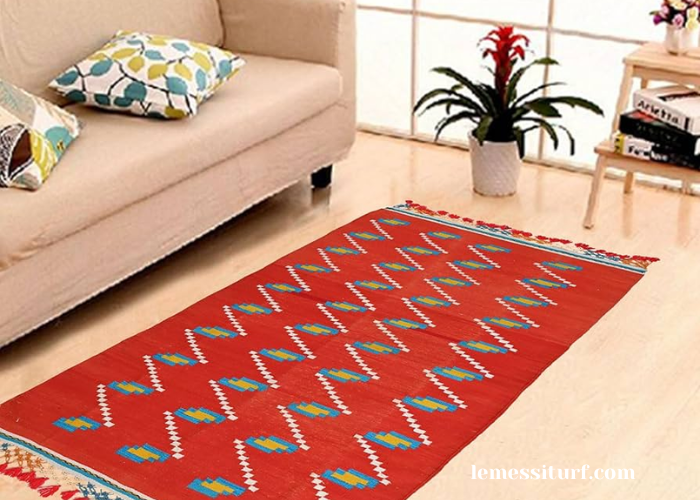Rugs, often overlooked, possess the transformative power to turn any living space into a realm of elegance and style. These textile masterpieces, with their intricate patterns and lush textures, have a timeless charm far beyond their functional purpose. Read on to explore the profound impact of rugs on interior design, shedding light on their artistic significance and how they can elevate the aesthetic appeal of any room.
Conventional Rugs: A Glimpse into Heritage:
Beautifully woven traditional rugs are a testament to the craftsmanship and artistry of generations past. These rugs bear the rich tapestry of their origins, often weaving stories of ancient traditions, symbols, and motifs with deep cultural significance.
Whether it’s the ornate Persian rugs, the geometric patterns of Moroccan rugs, or the vibrant colours of Turkish rugs, each variety tells a unique tale. Conventional rugs passed down through generations, carry the weight of heritage and beauty, making them timeless design masterpieces.
The Artistry of Craftsmanship:
Every rug is a labour of love, painstakingly crafted by skilled artisans who invest countless hours into their creation. The process of making these rugs is a meticulous one, involving techniques that have been honed and perfected over centuries.
From hand-knotting intricate patterns to carefully selecting colour palettes, the artistry of rug-making is a true marvel. This craftsmanship ensures the durability of these rugs and imparts a level of detail and quality that is unparalleled.
Aesthetic Versatility:
One of the most remarkable features of typical rugs is their ability to complement a wide range of interior design styles. Whether your home is adorned in a classic, modern, or eclectic fashion, there is a traditional rug that can seamlessly fit into your décor.
The diverse patterns, colours, and sizes available in these rugs make them versatile design elements that can tie together the look of any room. They serve as a unifying focal point, anchoring the space and adding depth and character.
Enhancing Space and Comfort:
Beyond their visual appeal, rugs offer a tactile comfort that cannot be ignored. These rugs create a sense of warmth and cosiness in a room, making it inviting and comfortable. They serve as sound dampeners, reducing noise levels and creating a peaceful atmosphere. Walking on a plush, traditional rug is a sensory pleasure that enhances the overall experience of a living space.
Cultural Significance:
The classic rugs are not mere objects; they carry cultural significance that resonates with people from various backgrounds. They reflect a region’s art, history, and heritage, often bearing symbols and motifs with deep cultural meanings. Owning a traditional rug is like owning a piece of history and culture, connecting people to the traditions and stories of distant lands.
The Art of Layering:
One of the trends in interior design that has gained popularity in recent years is the art of layering rugs. Conventional rugs are often used as a base layer, providing a solid foundation for additional rugs or decorative elements. This layering technique adds depth and pictorial interest to a room, creating a dynamic and personalised look that reflects the homeowner’s unique style.
Conclusion:
Time-honoured traditional rugs are not just floor coverings; they are design masterpieces that bring art, culture, and comfort into living spaces. With their intricate craftsmanship, aesthetic versatility, and cultural significance, they can transform any room into a beautiful and elegant place.
These rugs are a timeless investment, enriching homes and lives while carrying the heritage and traditions of the past into the present. The next time you walk upon a traditional rug, remember that you are treading on a piece of art, history, and enduring beauty.
